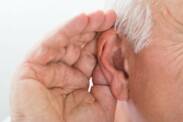Inner ear disorders
Inner ear disorders include
Diseases of the inner ear affect the inner part of the ear, which has a sensory function and also plays an important role in maintaining the balance of the body. That is why the diseases are related to the disturbance of these two basic functions of this organ, which is located in the temporal bone. The inner ear houses the actual hearing organ and the balance organ for perceiving the position of the body's balance. The inner ear is made up of the bony labyrinthis and the membranous labyrinthis, sometimes jointly simplified to the labyrinthis.
There are several types of diseases that can affect the inner ear. Some cause hearing impairment and reduced hearing perception, others are characterised by dizziness and the disease results in disturbed balance. Of course, sometimes inflammation can also occur in this part of the ear. The structure of the ear is quite complex and gives rise to a number of diseases, some of which can only be treated symptomatically by modern medicine, but others can be treated completely, including the cause.
Otosclerosis and related diseases
The inner ear is affected, for example, by diseases caused by metabolic disorders, such as otosclerosis and otospongiosis, non-obliterating otosclerosis, obliterating otosclerosis, cochlear otosclerosis, which may affect the bony sheath of the labyrinthis or the cochlear round block, and also other types of specified and unspecified otosclerosis. These are basically diseases causing sclerotization of the bones in the ear, whereby sound transmission is impaired and sometimes hearing loss occurs.
Otosclerosis itself is a disease of the inner ear in which there is abnormal bone growth near both the inner and middle ear, causing a conductive hearing loss, where the transmission of sound to the inner ear is impaired, but also a perceptual hearing loss, where the inner ear is affected and sometimes deafness occurs. Otosclerosis is more common in middle-aged people and women and is a degenerative disease of the bony labyrinthis.
Although otosclerosis affects only half a percent of the population, it is also a relatively common condition in inner ear problems. Most often, the disease results in a gradual loss of hearing, but sometimes a minor headache can also appear as a symptom. Treatment of otosclerosis requires a complex surgical procedure where the stirrup is replaced and an artificial replacement is implanted. There are no conservative forms of treatment for otosclerosis.
Other types of otosclerosis may affect the atrial oval block, for example, both non-obliterating and obliterating otosclerosis. The bony sheath of the labyrinthis or the snail round block itself is affected by cochlear otosclerosis. In this hearing disorder, which is a serious impairment of hearing, the hair cells are damaged, and the causes can range from congenital developmental defects to other diseases of the inner ear of a chronic, toxic or acute type.
Vestibular function disorders
Within the vestibular function, which mainly aims to maintain balance and the correct position of the head and body, there are also several diseases and disorders that manifest themselves in uncontrollable dizziness. These include, for example, Meniere's disease, labyrinthine hydrops, Meniere's syndrome and Meniere's insanity, but also benign paroxysmal insanity, vestibular neuronitis, Lermoyez syndrome, aural, otogenic and peripheral vertigo, central positional nystagmus and vertigo syndrome.
Meniere's disease can affect one or both ears, and is a disorder that manifests itself in a variety of ear noises and ringing, variable hearing loss, but especially unpleasant vertigo, dizziness, vomiting and loss of balance. The disease affects men and women alike, and mostly middle-aged people, and although it has been known for more than 150 years, the exact cause is still unknown. Symptoms of the disease return repeatedly.
It is the fact that this disease manifests itself in bouts of vertigo and balance problems that makes it unpleasant, and it is a disease that current medicine is not yet able to address causally, so therapy is symptomatic, i.e. aimed at alleviating the unpleasant clinical symptoms. Although it is possible to undergo conservative medical treatment, only surgery can eliminate vertigo, but even in this case the cause is not eliminated.
Vestibular schwannoma is also one of the diseases that fall under vestibular disorders, and it is not directly a disease of the ear, but a disorder of the cranial nerve, which is located in the inner ear. Again, the exact cause of the nerve disorder is unknown, but it is a disorder of the auditory-balance nerve, and so the disease manifests itself mainly in balance problems and also in perceptual hearing loss, in which a person does not hear particularly quiet sounds.
This schwannoma is actually a benign tumour that must only be removed by surgery, although thanks to modern possibilities, classical surgery is no longer necessary, but it is possible to remove the tumour by radiation. Usually the disease is very treatable and the symptoms disappear once the tumour has been removed. In this case, in contrast to Meniere's disease, the cause can be removed and therefore the treatment is more successful, especially if the diagnosis is made early.
Other diseases of vestibular function within the inner ear, such as Lermoyez syndrome, named after the French physician, present similar symptoms to Meniere's disease. This syndrome is also characterised by a reduction in hearing abilities and acute attacks of vertigo. Also, various types of Vertigo, which are manifested by uncontrollable vertigo and nausea, can affect the nerves or the balance apparatus in the ear.
Disorders of the labyrinthis
Lrinthine disorders most commonly include either various forms of dysfunctions or inflammation. Usually, these problems are manifested mainly by a deterioration of hearing, sometimes even its complete loss. Diseases that are classified as labyrinthisrinth disorders include the labyrinthitis, the labyrinthine fistula and various types of diseases causing labyrinthine dysfunction. The most common labyrinthine dysfunction is related to perceptual disturbances, so this includes hypersensitivity, hypofunction, and complete loss of function.
Inflammation of the inner ear is also called labyrinthitis and it is a severe disease that can even lead to deafness in case of complications. Inflammation is usually triggered by inflammation in the middle ear, where bacteria get into the blanched windows connecting these two parts of the ear and enter directly into the labyrinthis, where they cause inflammation. Typically, the disease manifests itself with pain, dizziness, vomiting and coordination disorders, but there is not always a symptom of pain, often the inflammation takes place without it.
Usually, this inflammation affects only one ear, but in some cases it can also be a bilateral inflammation. As it is a bacterial disease, antibiotics are required for treatment and bed rest is necessary during treatment to prevent the dizziness from becoming too much of a complication. Classical conservative treatment is usually enough to resolve this inflammation, but if it is a more severe course of the disease, surgical intervention is sometimes necessary.
The labyrinthine fistula is also a problem. This is an acquired defect of the bony wall of the labyrinthis in the inner ear and usually this disease also arises as a complication of the inflammation of the middle ear, specifically chronic suppurative inflammation. The fistula may occur in different parts of the labyrinthis, but most cases occur in the lateral semicircular passageway. The disease sometimes has an asymptotic course, so that it does not cause the patient much trouble, but in most cases it manifests itself.
Najčastejšie dochádza k percepčnej nedoslýchavosti na niektoré tóny a hladiny zvuku a prítomné sú aj závrate. Tento patologický stav sa dá liečiť jedine chirurgickou operáciou, pričom sú dve varianty zákroku. Pri jednej sa ponecháva matrix cholesteatomu v oblasti fistuly, pri druhej sa komplexne odstraňuje. Operácia je riziková z hľadiska rizika postihnutia funkcie vnútorného ucha, kedy hrozí buď dlhodobá percepčná nedoslýchavosť alebo výnimočne hluchota.
The labyrinthis can also be affected by various dysfunctions, either its insufficient function due to pathological inflammatory and non-inflammatory causes, or its excessive sensitivity, e.g. due to allergic reactions. The most severe disorder is complete loss of labyrinthine function, which, like other disorders in this area of the inner ear, is manifested by partial impairment or partial loss of hearing, as well as impaired coordination of balance and head spinning.
Noise-induced dysfunction
Noise can also cause major hearing problems, especially in the inner ear. Basically, damage of either the acute or chronic type is possible. In the acute type, it is called acute acoustic trauma, where a person has been exposed to noise, albeit briefly, but excessively. These are already sound thresholds above 120db, which the normal ear can withstand for only 10 to 15 seconds. In the chronic type of hearing impairment, this is chronic acoustic trauma, where sound levels above 90db are sufficient.
When acoustic damage is caused by an acute cause, such as a firecracker or a strong explosion, it is necessary to seek a doctor as soon as possible, who will perform examinations and immediately apply glucocorticoid treatment. This treatment is anti-inflammatory and gives a better chance of regenerating the hearing cells in the ear. In this case, literally every hour makes a difference and if a person misses usually the first 24 to 48 hours after causing the problem, the chances of treatment drop rapidly.
Chronic damage is caused by prolonged exposure of the ears to excessive noise, and can also be caused by working in a demanding environment where the person does not protect their hearing sufficiently. Here, hearing fades gradually, unlike in an acute case where the whistling in the ears or hearing loss manifests itself with an acute and intense onset. In the chronic form, conservative medical therapy is also used, or treatment is supplemented, as in the acute trauma, with a stay in a hyperbaric chamber, which improves blood circulation and restoration of hearing functions.











